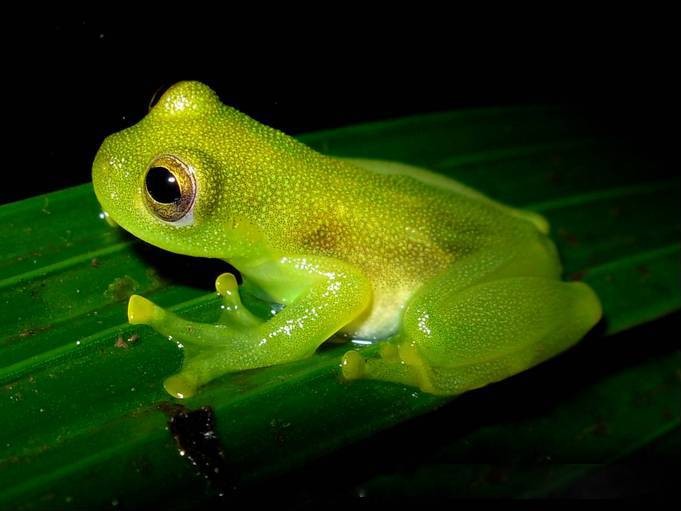During nighttime, small glass frogs turn transparent. According to Daily Mail, they are able to do so by hiding close to 90% of their red blood cells.
Glass Frogs Turn Transparent
According to a study published in Science, the frogs' colorful areas are kept within the species' liver, which is capable of disguising the cells. During the day, such frogs hang and sleep under leaves of trees. BBC notes how in order to bypass predators, it turns 61% transparent and disguises itself.
According to researcher Jesse Delia, if one turns the frogs over, one may observe the species' heart beating on its own. The muscle and skin can also be seen through as the majority of the frogs' body gets transparent.
ALSO READ: Study on Glass Frog and its Translucent Skin Reveals More than Just its Camouflage Technique
Why Do Glass Frogs Turn Transparent?
To understand why this phenomenon takes place, scientists conducted a study using imaging technology with ultrasound and light. Through their efforts, they were able to find out that these species hide close to 90% of their red blood cells within their liver as they sleep.
Blood circulation could shake their disguise. Study author Junjie Yao also notes how these frogs are capable of shrinking and shrinking several internal organs.
When the frogs want to actively hunt or mate again, they release the blood cells back. The liver, on the other hand, gets smaller.
Carlos Taboada, one of the study authors, also shares that the blog is still capable of blood clotting whenever necessary, such as in cases of injury.
Frog biologist Juan Manuel Guayasamin shares how this study intricately explains how the glass frogs keep blood within their liver in order to stay transparent.
Glass Frogs Capacity To Endure Lack of Blood Circulation
While scientists were able to discover a vital reason why these glass frogs can stay transparent, the phenomenon itself is still quite mysterious, especially among land-based creatures.
Daily Mail notes how it would be deadly for most animals if they had minimal blood circulation for many hours. Moreover, if blood is tightly concentrated, it may lead to dangerous clotting. The glass frogs, however, were able to survive and endure such conditions.
Scientists think that studying this species further can help with the development of treatments to combat blood clotting. However, BBC notes that applying findings practically may still be far-fledged or decades away.
According to Oxford biologist White, the phenomenon of transparency is remarkably rare across nature. Moreover, aside from the glass frog, the phenomenon has not been seen across other land animals. Daily Male notes how other species that get transparent, such as jellyfish, shrimp, worms and other insects, do not have large amounts of red blood moving through their bodies.
RELATED ARTICLE: Two New Species of Endangered Glass Frogs With See-Through Bodies Discovered in Active Mining Sites in Ecuador
Check out more news and information on Animals in Science Times.












!['Cosmic Glitch' in Einstein's Theory of General Relativity Could Be Explained in This New Scientific Tweak [Study]](https://1721181113.rsc.cdn77.org/data/thumbs/full/53435/258/146/50/40/cosmic-glitch-in-einsteins-theory-of-general-relativity-could-be-explained-in-this-new-scientific-tweak-study.jpeg)


